Summary
North Ayrshire has 12% of all vacant and derelict land in Scotland, one of the highest proportions of any Scottish Local Authority.
Combined, the Scottish Vacant and Derelict Land Register and Buildings at Risk Register identify over 250 sites, mostly in private ownership, which require redevelopment. These are often subject to a legacy of issues including undermining, contamination, deterioration, or major industrial closures. Whilst there are several reasons for a lack of redevelopment including economic, locational, or physical constraints, a lack of financial viability remains a common theme.
Progress has been made towards the re-use of sites, including steps to regenerate Strategic Development Areas identified in the North Ayrshire Local Development Plan. However, many sites have a substantial negative impact on our communities and represent local priorities for action.
A refresh of the Vacant and Derelict Land Strategy, originally published in 2014, provides an opportunity to review the themes, aspirations and challenges of vacant and derelict land in North Ayrshire.
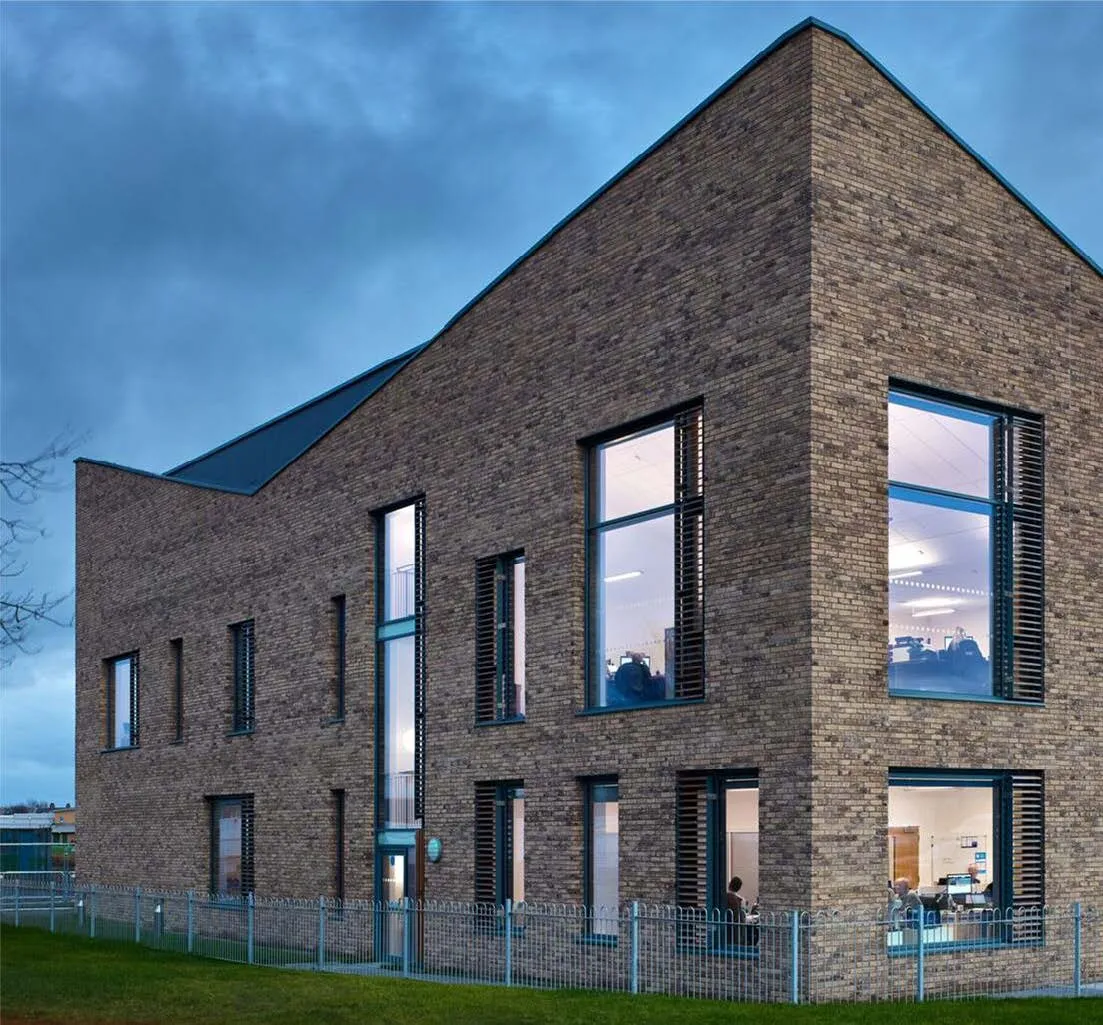
The 2023 to 2027 Vacant and Derelict Land Strategy considers how vacant and derelict land fits within the wider context of National and Local priorities and objectives, including Community Wealth Building, the challenge of net zero, and the climate emergency.
Significant research into the issue has been undertaken, in particular by the Scottish Land Commission, who have published a series of recommendations which have informed this strategy.
The 2023 to 2027 Vacant and Derelict Land Strategy has been informed by consultation with stakeholders and local communities, who have highlighted the negative impact of vacant and derelict land and buildings, to the detriment of the environment, economy and community. The 2023 to 2027 strategy includes a series of actions to promote the positive re-use of sites such that:
- Actions are prioritised towards those sites of greatest impact to communities and support the creation of sustainable places, with the application of transparent assessment criteria.
- Communities are empowered and supported to tackle vacant and derelict land, on a temporary basis, for example through a ‘stalled spaces’ initiative, or permanently.
- Potential end uses for sites are explored, ranging from development opportunities to green space creation.
- The Council provides support for the development of vacant and derelict land as far as possible, for example through simplifications to the planning process or ‘de-risking’ of sites which have an uncertain history, for example through the Council’s Repurposing Property Grant Fund.
- Information on sites is gathered by the Council and, so far as possible, shared amongst concerned parties including affected communities.
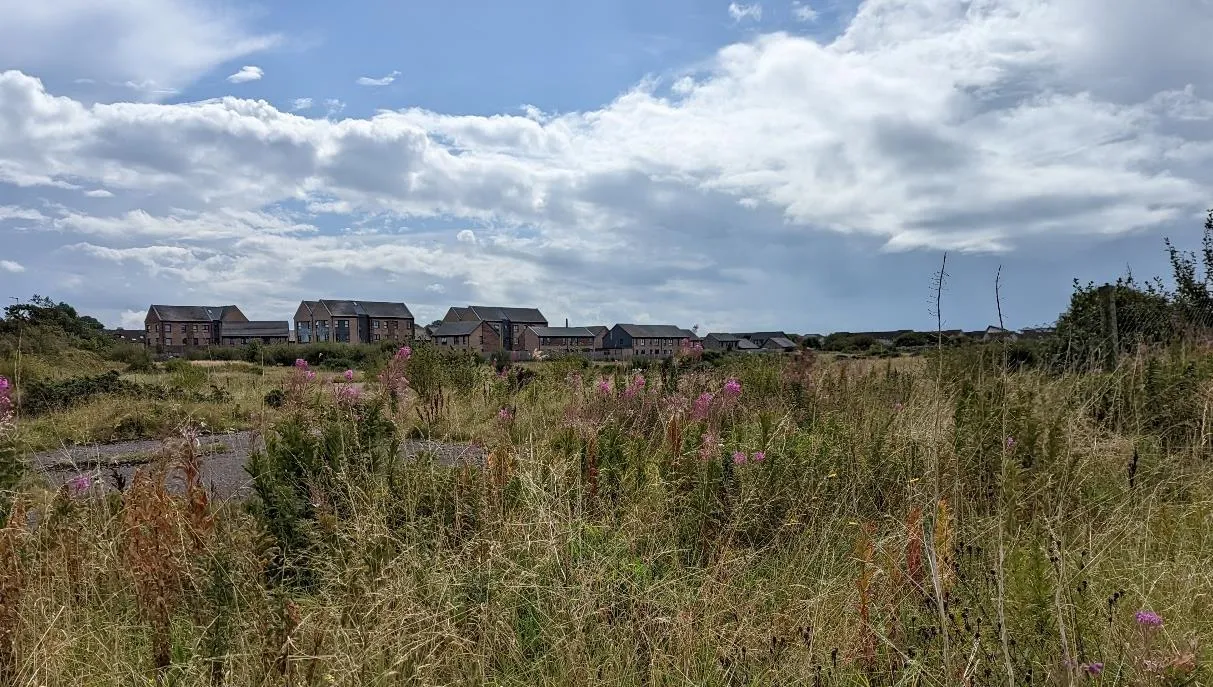
Themes and Actions for 2023 to 2027
Introduction
Purpose
North Ayrshire includes one of the highest proportions of all vacant and derelict land of any Scottish Local Authority. In 2021, 213 sites were formally listed as vacant and/ or derelict, with a substantial proportion of the population of North Ayrshire living within 500m of a derelict site. Vacant and derelict land sites which require development are mostly in private ownership. These are subject to a legacy of issues including undermining, contamination, deterioration, or major industrial closures. Whilst there are several reasons for a lack of redevelopment including economic, locational, or physical constraints, a lack of financial viability remains a common theme.
In recent years progress has been made to restore vacant and derelict land sites back to productive use, and the approach to addressing vacant and derelict land in North Ayrshire has been guided by the Council’s Vacant and Derelict Land Strategy which was prepared in 2014. The Council have received allocations of close to £10m from the Scottish Government administered Vacant and Derelict Land Fund since 2016, informed by the 2014 Strategy.
The 2023 to 2027 Vacant and Derelict Land Strategy has been prepared to align with current priorities, strategies and plans of the Council. Public consultation, emerging guidance, case studies, examples of ‘best practice’, and success stories within North Ayrshire have informed the refresh of the strategy.
The 2023 to 2027 strategy provides an action plan to reduce the level of vacant and derelict land in North Ayrshire.
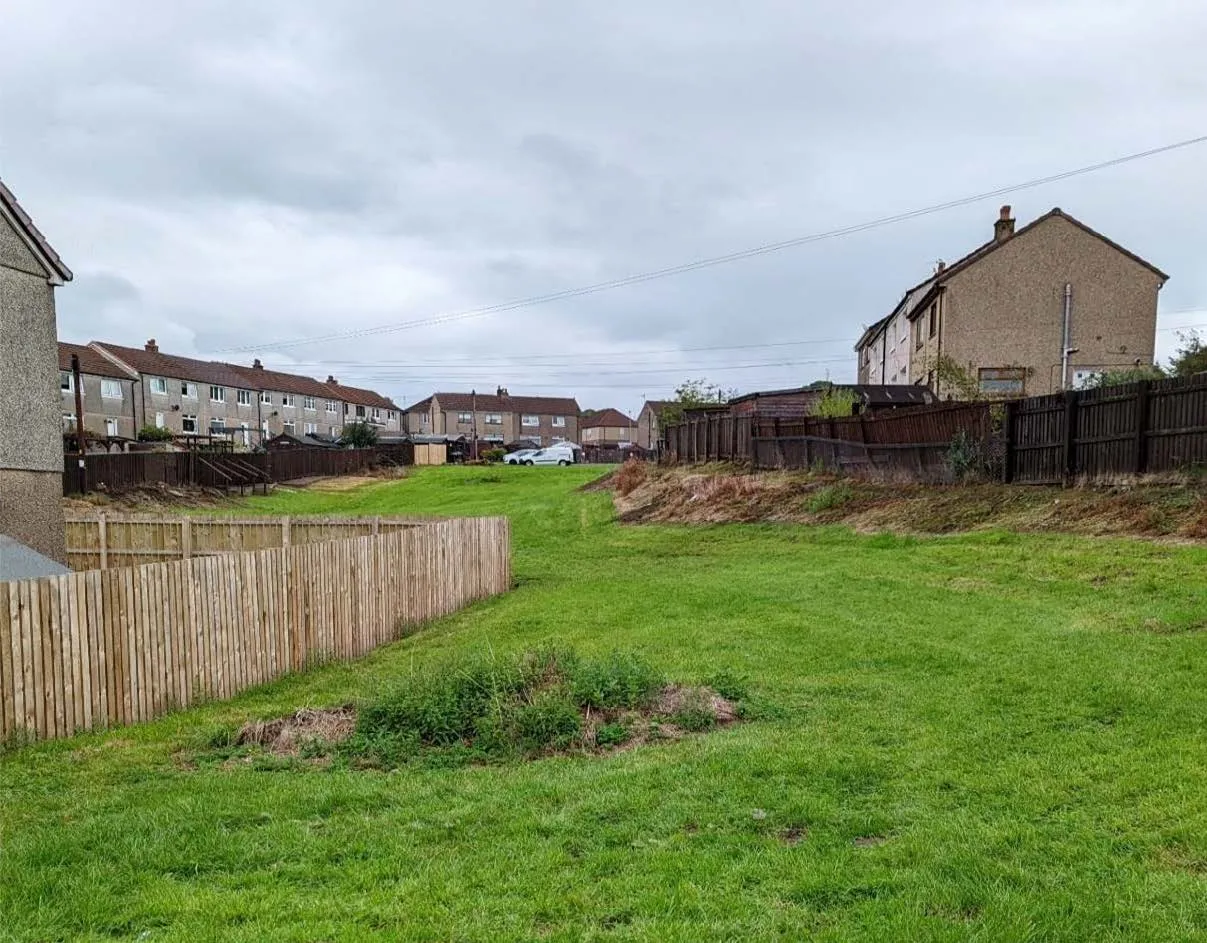
Definitions
Vacant and derelict land have specific definitions in the context of how such sites are recorded by the Scottish Government. The 2021 Vacant and Derelict Land (VDL) Survey defines vacant and derelict land (and buildings) as follows:
Vacant land is land unused for the purposes for which it is held, and which is viewed as an appropriate site for development. This land must either have had prior development on it or preparatory work must have taken place in anticipation of future development.
Derelict land (and buildings) is land which has been so damaged by development, that it is incapable of development for beneficial use without rehabilitation. In addition, the land must currently not be used for the purpose for which it is held or a use acceptable in the local plan. Land also qualifies as derelict if it has an un-remedied previous use which could constrain future development. Sites less than 0.1ha in size are not included on the Scottish VDL register.
Some sites in Scotland are referred to as DUSTEs, which are:
- Derelict – sites with identified barriers to re-use, such as leftover buildings and materials, which are likely to be more challenging to bring back into use than sites that are simply vacant – and therefore in greater need of public support.
- Urban Sites – sites located within communities are more likely to be causing harm to people nearby – and therefore of higher priority for action than sites located in the countryside.
- Unused since year 2000 or earlier – sites that have been on the Register since at least 2000 can be regarded as ‘stuck’.
Why does land become vacant and derelict?
There are often many complex reasons why sites fall vacant or derelict and remain so for an extended period of time. Reasons documented by the Scottish Land Commission Vacant and Derelict Land Taskforce, and other bodies, include:
- Past uses of sites leaving problems such as contamination which are expensive or risky to address for new users.
- Sites being poorly connected or badly located for alternative uses.
- Difficulty financing risky sites where the level of remedial works is uncertain.
- Landowners retaining or purchasing land in the hope that market values may increase.
- Buildings becoming unfit for use or uneconomic to maintain.
- Surplus land or buildings falling out of use but with no incentives for owners to sell or redevelop sites.
- Lack of information on landowners who might be contacted regarding the redevelopment or re-use of sites.
Relying on market conditions alone rarely results in more problematic sites, particularly derelict ones, returning to viability. These sites often require public support to return to positive uses.
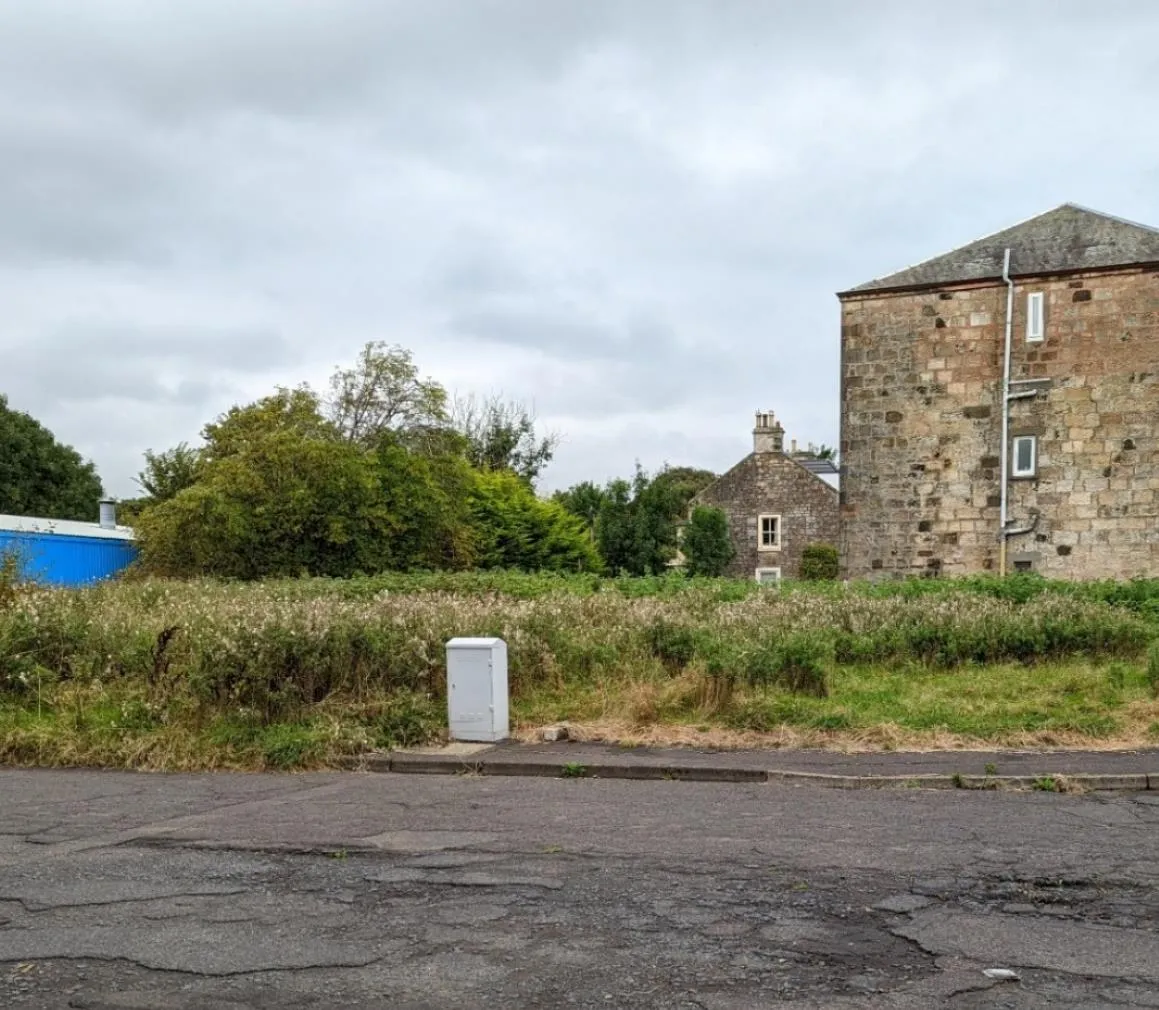
Why vacant and derelict land should be tackled
Work by the Vacant and Derelict Land Taskforce highlights the hidden costs of urban dereliction, and how an ‘adverse physical environment’ contributes to Scotland’s problem of excess mortality.
Vacant and derelict sites affect people’s feelings about the places in which they live and visit. Abandoned buildings and land, especially in prominent locations such as high streets, give rise to negative perceptions for both residents and visitors. They often give rise to concern about safety, and attract negative behaviours such as vandalism, fly tipping and antisocial behaviour.
Some sites present significant physical barriers, cutting off communities or making it difficult to access parts of the countryside or coastline. There is also uncertainty attached to some derelict sites, it being unknown to communities who owns sites or what, if anything, is planned for them.
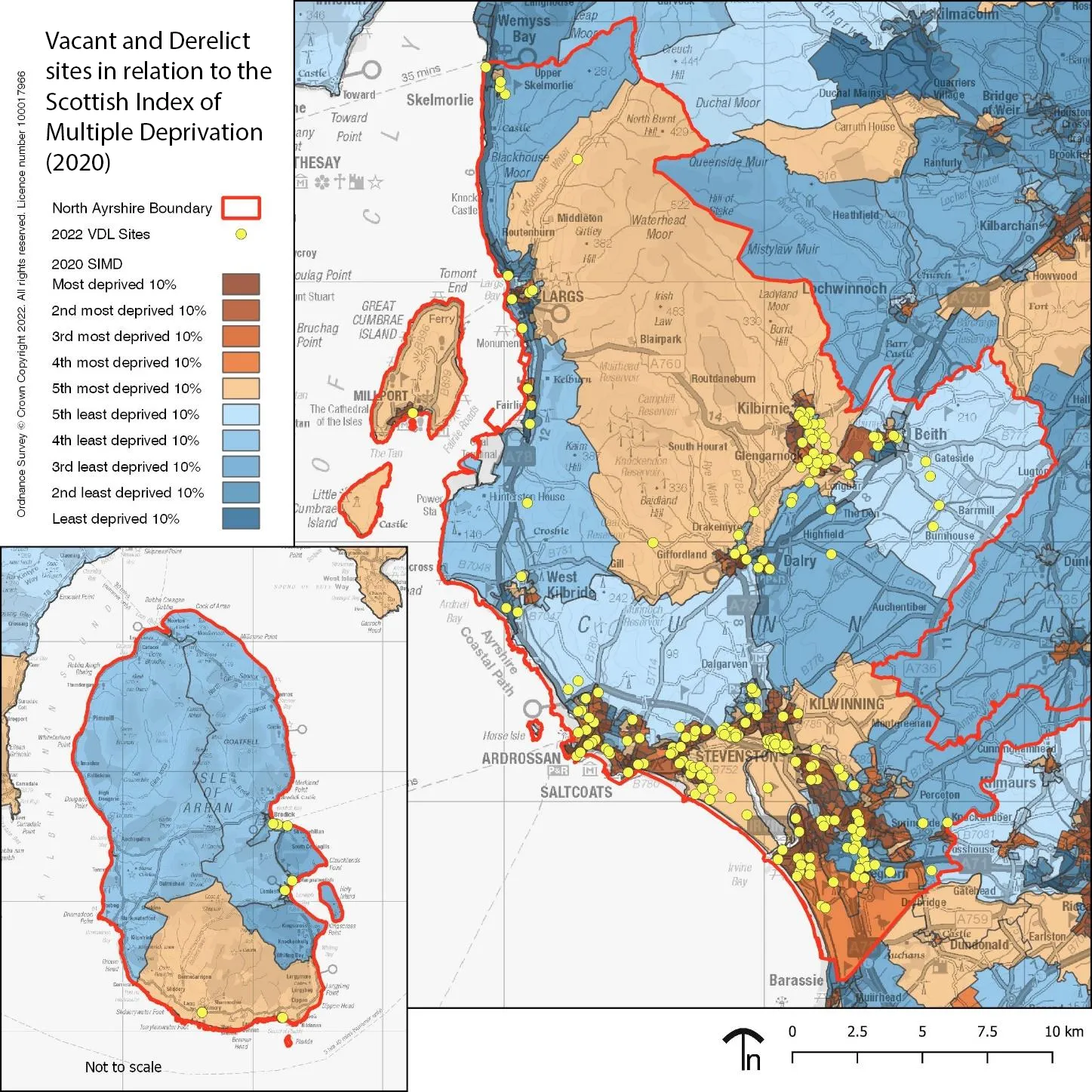
The 2020 Scottish Index of Multiple Deprivation shows vacant and derelict land sites in North Ayrshire are typically clustered in and around areas of highest deprivation, disproportionately affecting those communities already facing challenges of poor health, low income, crime, lack of housing and poor access to services. Approximately 40% of the population of North Ayrshire live within 500m of a vacant or derelict site.
The aspiration is for vacant and derelict sites to be redeveloped to meet the needs of communities, such as for housing, employment, green spaces, community spaces, renewable energy, and places for nature.
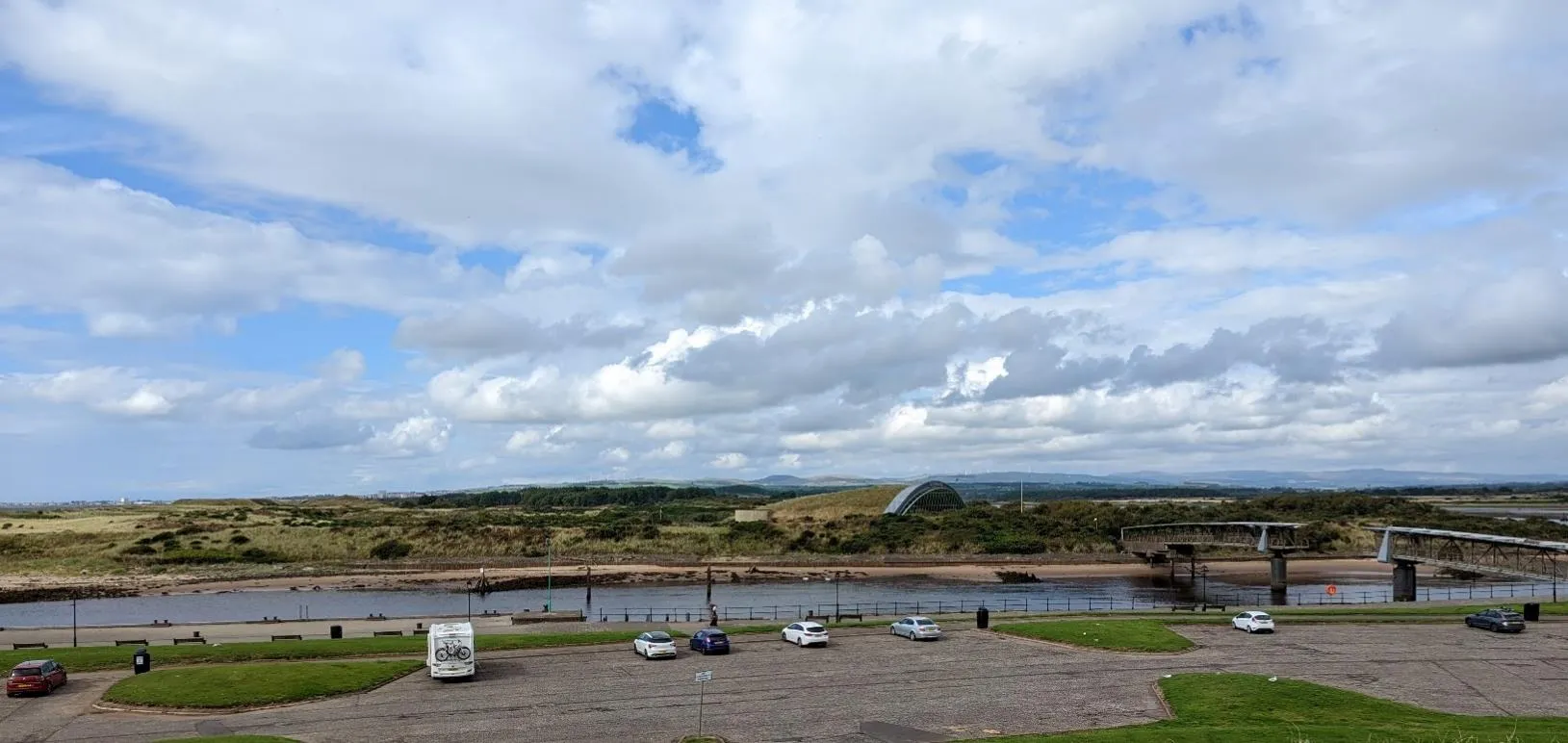
Vacant and derelict land in North Ayrshire
As of January 2023, North Ayrshire had 1,133 hectares of vacant or derelict land across 190 sites. Approximately 85% of sites are located in ‘Three Towns’, Irvine and Kilwinning. There is a further concentration of sites near Kilbirnie. The north and west of North Ayrshire is much less affected by vacant and derelict land.
Approximately 95% of vacant and derelict land in North Ayrshire has been classified as vacant or derelict for 15 years or more.
Many sites are in private ownership, or their ownership status is uncertain, while a number of sites are owned by North Ayrshire Council or other public bodies.
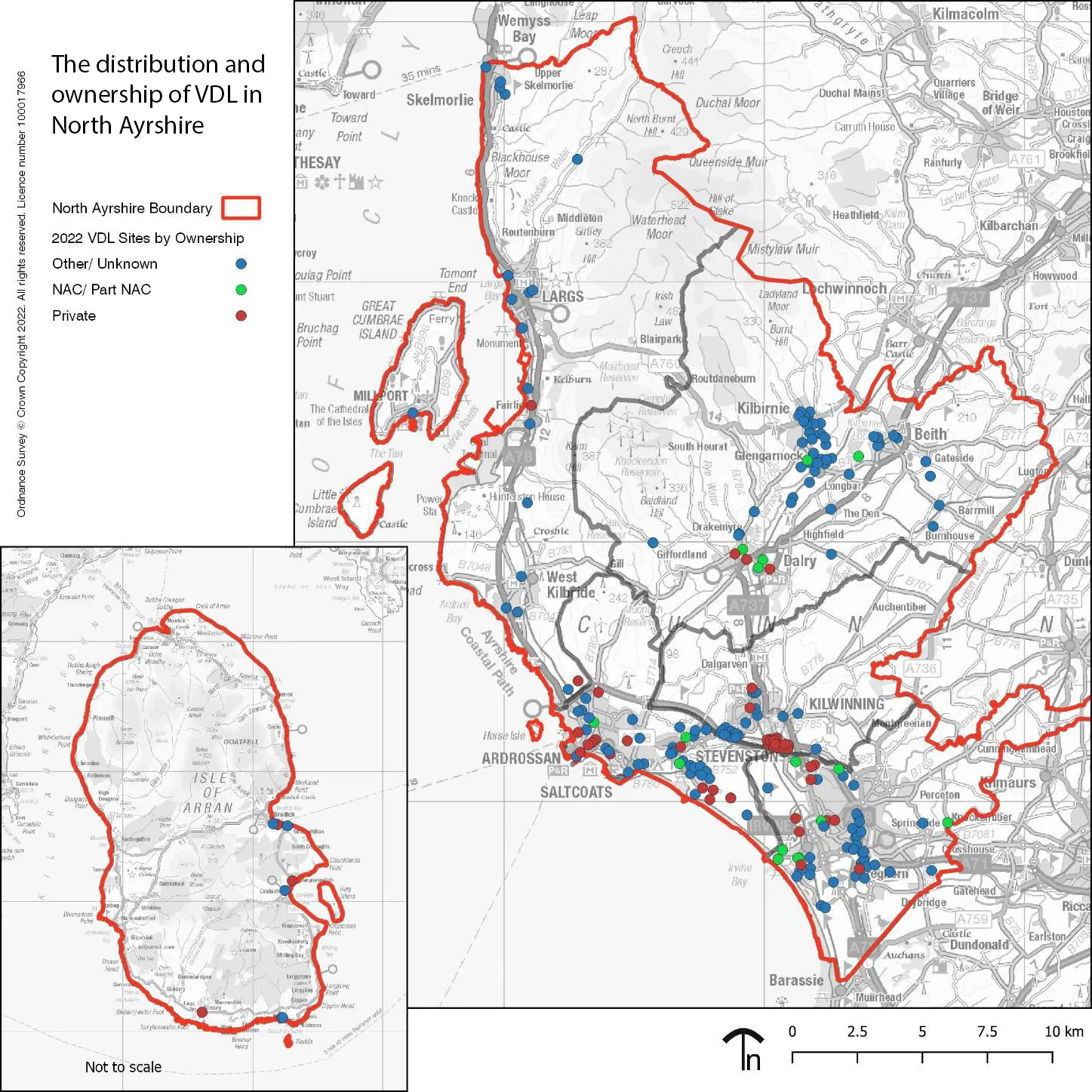
Over 70% of sites are in urban areas, however this only comprises approximately 40% of the land area of vacant and derelict sites, with some of the largest sites such as those at Ardeer, located outside of settlements. Urban sites are concentrated mostly in the ‘Three Towns’ of Stevenston, Saltcoats and Ardrossan and of Irvine, Kilwinning and Kilbirnie.
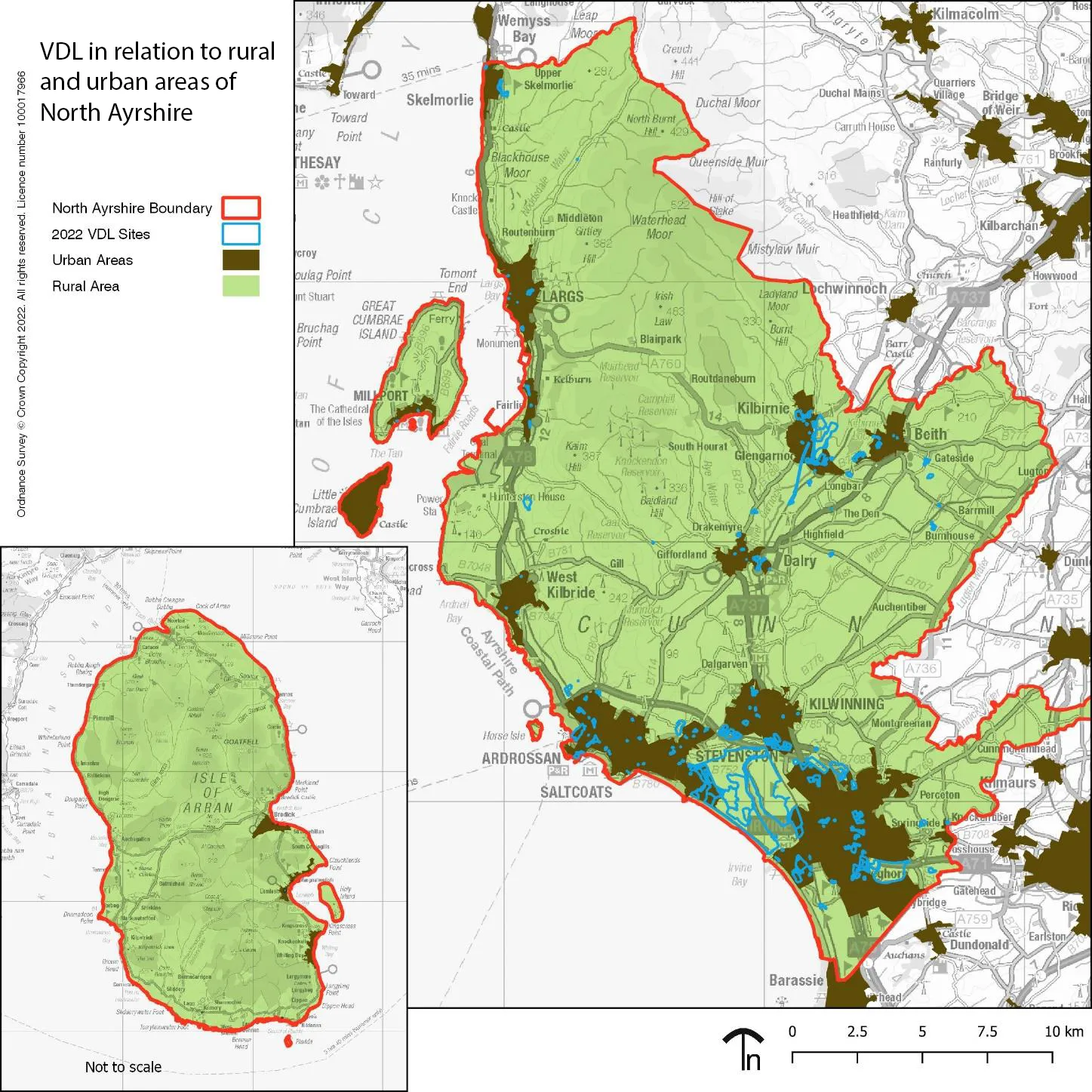
Progress
In 2013, when the 2014 VDL Strategy was prepared, there were 1,333 hectares of vacant and derelict land spread over 255 sites, compared to 190 sites across 1,133 hectares in 2023. Many of the proposed actions and themes identified in the 2014 Strategy have been progressed, including the undertaking of major regeneration projects to redevelop vacant and derelict sites in North Ayrshire’s Strategic Growth Areas, described below.
Lochshore, Kilbirnie
Lochshore is the site of the former Glengarnock Steelworks near Kilbirnie and covers around 250 hectares, including Kilbirnie Loch.
Formerly under the ownership of Scottish Enterprise, the land is now owned by North Ayrshire Council. The site will benefit from around £1.7m of funding from the Vacant and Derelict Land Fund.
After much consultation with residents and work with a range of partners, a new £4.2 million Visitor and Community Hub has recently been completed.
The project will aid the regeneration of the surrounding communities of Kilbirnie, Beith and Dalry and to serve the entire Garnock Valley community.
A new active travel route connecting the site to Kilbirnie and the NCN7 will be constructed. Further active travel routes, a play area and a 5km leisure route incorporating play and interpretation have been designed.
The Garnock Visitor and Community Hub provides improved facilities for the local rugby club in addition to space for sports and other community groups.
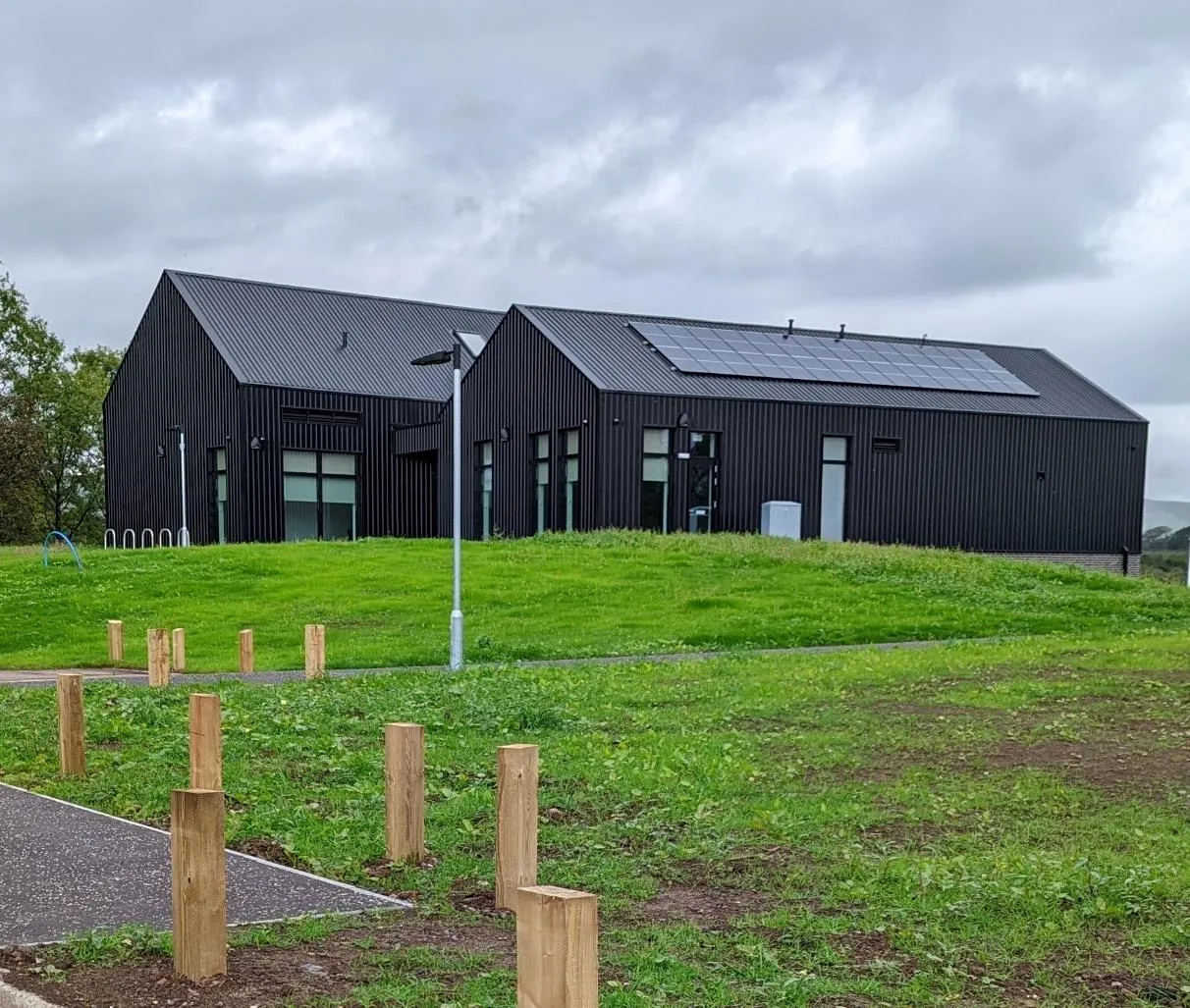
i3 Irvine
Investment at i3, Irvine, will result in the creation of a Digital Processing Manufacturing Centre (DPMC) at i3, Irvine Enterprise Area to provide a Centre of Excellence for digital automation and approximately 8,830 sqm of flexible advanced manufacturing space serving digital process industries. This will build on current Life Science Clustering at the site, and will facilitate R&D activity, start up, spin out, and growth of Life Science businesses and other advanced manufacturing opportunities.
New developments at the i3 Irvine Enterprise Area Advanced Manufacturing Space in Irvine will create a National Digital Processing Industry Hub and advanced manufacturing flexible space, serving digital processing industries.
The National Digital Processing Industry Hub will be developed at i3 with links to the National Manufacturing Institute for Scotland in partnership with Strathclyde University and industry. The project also includes construction of flexible business space capable of meeting the requirements of Chemical and Life Sciences manufacturing, Digital Automation and other advanced manufacturing opportunities. The combined offer at i3, centred round the National Digital Processing Industry Hub, will attract a range of supply chain and digital technology SMEs and start-up and offer strategic capacity to secure major digital process sector investment at i3.
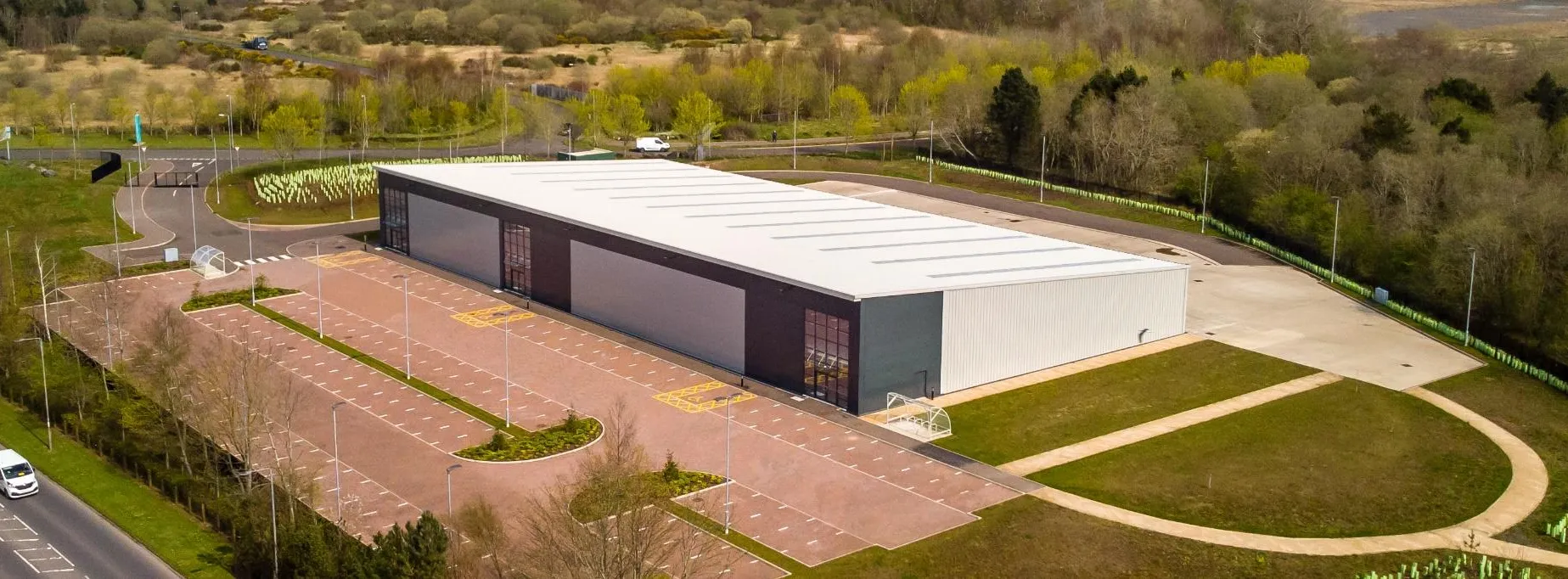
Ardrossan Harbour and North Shore
The North Shore is the site of a former oil refinery, but which has lain vacant for 30 to 40 years.
Proposals for the site include a new campus for Ardrossan Academy and Winton Primary School, consolidating the schools as part of a Community Campus which will also include an Early Years facility, and re-provide Auchenharvie Leisure Pool and Ardrossan Public Library.
The proposals also include sports pitches for school and community use, 130 to 150 houses both private and social, a coastal path, an International Marine Science and Environment (IMSE) facility, commercial, public spaces and tourism uses.
Quarry Road, Irvine
Quarry Road is a large regeneration masterplan in the heart of Irvine, which promotes health and wellbeing. The former brownfield site is next to the historic recreation park which was once the home of the Caledonian greyhound race track and has been revitalised with new football pitches and outdoor sport facilities. The building provides high quality office accommodation and is also a landmark - forming a gateway for safe, landscaped routes for pedestrians and cyclists from the town centre to the new leisure development and park.
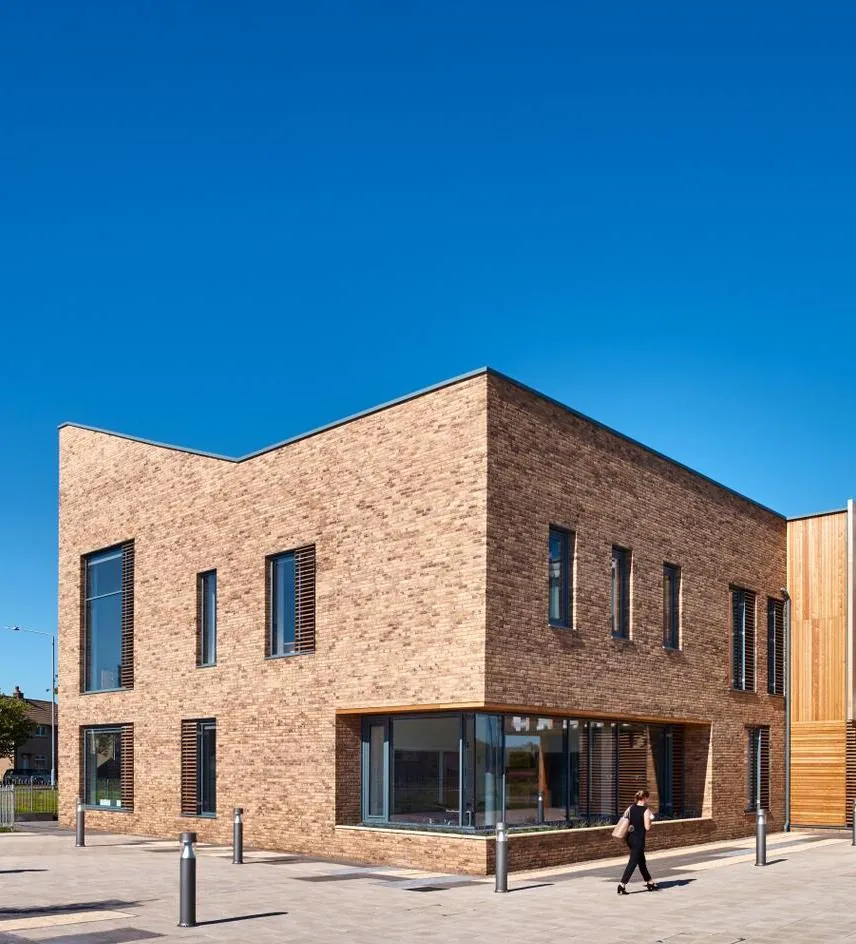
Annickbank Innovation Campus
Annickbank Innovation Campus is an important business location within Irvine’s i3 Enterprise Area providing modern, energy efficient office space targeted at SMEs and life science related sectors.
The Council are currently progressing a third phase of energy efficient office development at Annickbank on a site of c.0.13 hectares, classed as vacant and derelict land for over forty years.
Recent property market advice has highlighted the lack of modern business properties in North Ayrshire. The proposed building will meet this demand through the provision of a new Class 4/5/6 two-storey office pavilion with 350 sq. m. of flexible modern business space capable of sub-division.
The building will be constructed to achieve the enhanced carbon emissions rate set by Section 7: Sustainability of the Scottish Building Standards and include low or zero carbon generating technologies (LZCGT). The aspiration is to achieve Platinum standard which relates to net zero carbon emissions.
Other actions and initiatives
Repurposing Property Grant Fund
The Repurposing Property Grant Fund has been developed by the Council to support landowners and community groups in bringing smaller sites back to use. Stage 1 of the fund allows property owners or community groups to carry out feasibility studies to identify potential options for the sites and their viability. Future stages of funding are proposed to support the progressing of proposals for sites.
Residential Development
Significant volumes of housing have been delivered at previously vacant and derelict sites such as Montgomerie Park, Irvine Harbourside, West Byrehill in Kilwinning and Caley Court in Stevenston.
Annual Site Review
The annual review of sites by NAC officers and the publishing of an online Storymap showing available information on vacant and derelict sites.
Action Plan
Principles
The aim of the strategy is to reduce the amount of vacant and derelict land in North Ayrshire, and the following principles can guide how this change is brought about.
While Scottish Government policy prefers to re-use vacant and derelict sites, it should be recognised that some sites, particularly those which are isolated from communities or in more rural locations, may not ever be suitable for development, but could contribute to green networks, places for nature or open space, helping to meet carbon net-zero or biodiversity targets.
Similarly, the redevelopment of vacant and derelict land should support the creation of sustainable places, for example through the ‘20-minute neighbourhood’ concept.
Communities are subject to the adverse effects of vacant and derelict sites. Communities should be supported to improve sites which affect them most, this may be through temporary or permanent uses.
Sites should be evaluated to establish which are local priorities to communities, their development potential and barriers to development.
Innovative approaches should be supported to help remove barriers to the redevelopment or reuse of sites, helping to de-risk sites.
Opportunities to gather information on sites, monitor them and share information should be maximised.
Themes and Actions
Actions for reducing the amount of vacant and derelict land in North Ayrshire are identified under the following themes.
- Theme 1: Leading by Example - Responsible stewardship of sites in Council ownership.
- Theme 2: Identifying Priorities - Identifying which sites can contribute most to National and Local priorities.
- Theme 3: Working with Others - Supporting other owners of VDL sites in putting them to positive use.
- Theme 4: Supporting Communities - Providing support to communities to improve sites which affect them most, this may be through temporary or permanent uses.
- Theme 5: Information Gathering, Monitoring and Reporting - Collecting and sharing information about vacant and derelict land.
Theme 1: Leading by Example
Whilst there are several reasons for a lack of redevelopment of sites, including economic, locational, or physical constraints, or a lack of financial viability, site ownership can be a barrier to the delivery of the 2023 to 2027 Vacant and Derelict Land Strategy. Therefore, to evidence the potential of vacant and derelict land, the Council will aim to utilise the sites within its ownership as best practice examples for the transformation of Vacant and Derelict Land.
1. The Council will continue to promote existing large-scale priorities and development of proposals for Council owned VDL sites.
2. Detailed assessment of remaining Council sites will be undertaken to identify the potential of sites, constraints, and opportunities. Remediation and management plans will be developed for Council sites, including an anticipated development timeline.
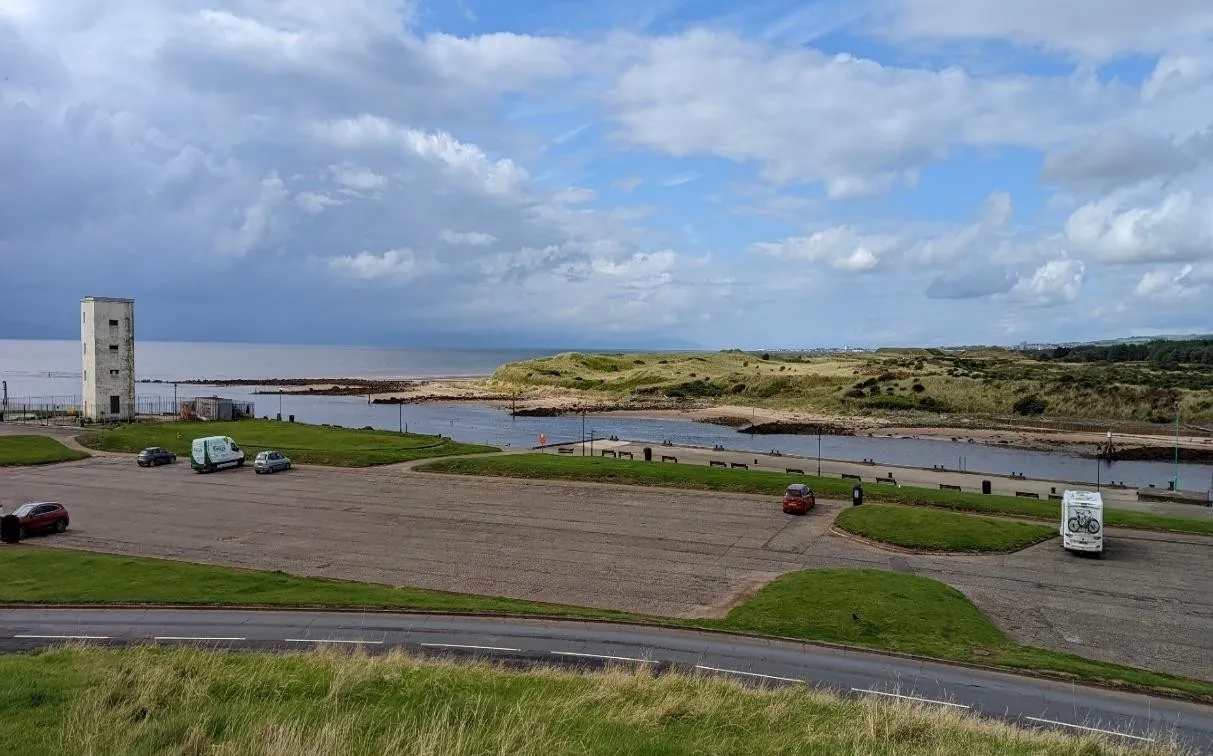
Theme 2: Identifying Priorities
The development of a means by which sites can be prioritised for action based on a range of appropriate criteria would help to:
- direct resources to those sites with the greatest need for development and
- allow communities to better understand Council priorities for action.
Timelines and action plans should be developed according to site prioritisation. Priorities for action will ultimately be informed by an evidence based judgement informed by a range of criteria, however the reasons for site prioritisation should be defined.
3. The development of assessment criteria will provide a transparent means of prioritising action and resource for vacant and derelict land. Priorities will be based on a range of criteria, however the reasons for site prioritisation should be clearly defined.
4. The preferred or likely end development use of VDL sites should be established based on the Local Development Plan (LDP), feasibility studies, or statutory approvals. Sites more suitable for naturalisation, contributing to green networks and open space provision should also be identified.
| Assessment criteria | Description |
|---|---|
| Prominence | Sites in town centres, high streets and urban coastlines should be of higher priority for action. Sites which are more remote or naturalised may be of lower priority. |
| Length of time vacant | Sites which have been vacant for 15+ years should be prioritised. |
| Scottish Index of Multiple Deprivation (SIMD) | The location of the site in relation to deprived communities. Sites situated closer to more deprived communities should be of higher priority. |
| Built heritage | Sites with locally iconic or architecturally prominent buildings. |
| Site condition | Sites in the poorest condition should be of higher priority. |
| Leverage of Funding | Sites where funding can be secured through funding streams identified in the Regeneration Delivery Plan should be prioritised. |
| Proposed end use | If known, sites which can best contribute to meeting local priorities and known needs should be prioritised for action. |
| Community feedback | Sites which have been specifically identified by communities as an area of concern should be prioritised. |
Theme 3: Working with Others
Addressing vacant and derelict land will require collaboration between various parties including landowners and partners in the public and private sectors. Potential site developers would benefit from the de-risking of sites, and greater certainty as to end uses which could receive support from the Council.
5. The Council will continue to develop and implement the Repurposing Property Grant Fund and investigate extending its scope to overcome barriers to bringing sites back to positive uses, subject to available funding.
6. The Council will gather information on land ownership, and proactively engage with landowners to encourage the restoration of sites to positive uses, either permanently or on a temporary basis, and identify the barriers to development.
7. The Council will work with partners in the public sector to identify their intentions for the development or re-use of vacant and derelict sites in their ownership.
8. The Council will prepare masterplans and development briefs for priority sites, subject to funding and where appropriate consider the implementation of Masterplan Consent Areas to simplify the planning processes for appropriate forms of development.
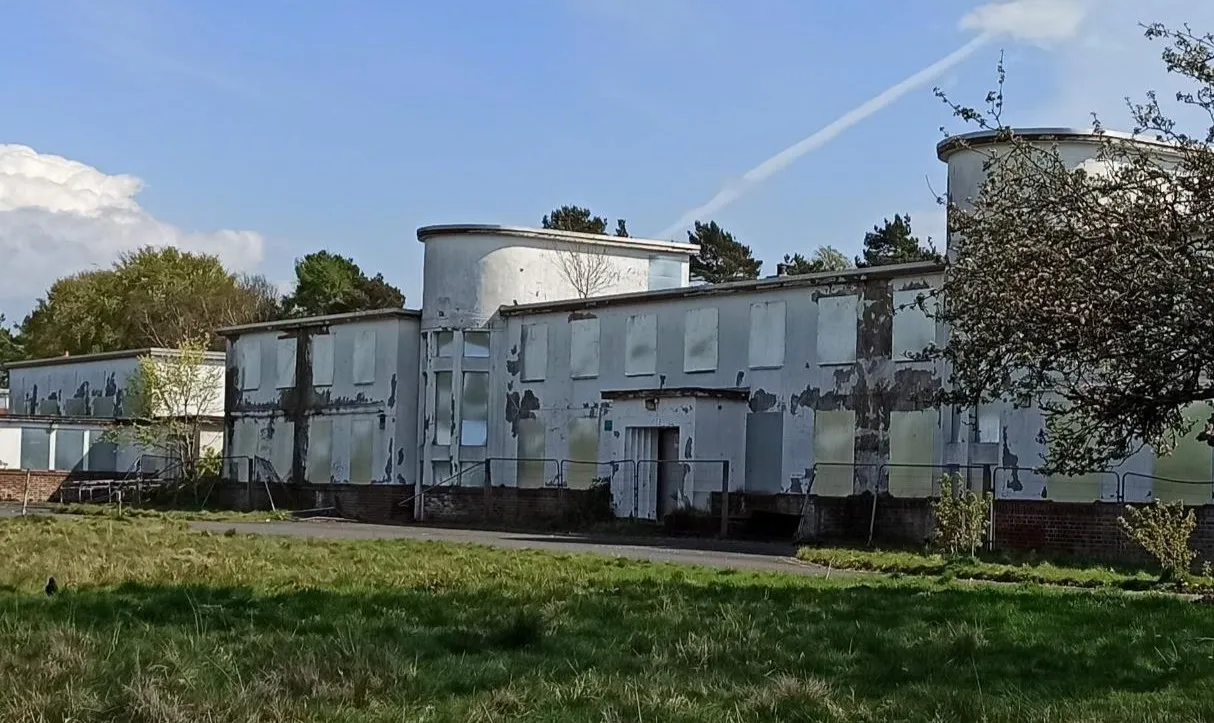
Theme 4: Supporting Communities
Communities should be supported to use a vacant or derelict site on a temporary or permanent basis.
9. Subject to the availability of funding, the Council will develop a stalled spaces programme to promote the positive temporary use of vacant and derelict sites and will work with landowners to facilitate access to sites which are safe to contribute to open space provision.
10. The Council will investigate the potential for a visual improvement fund targeted at sites which are in very poor condition, most affecting communities and in prominent locations.
11. The Council will implement a mechanism by which communities can easily highlight sites of concern, put forward suggestions for the use of vacant and derelict sites and comment on development briefs prepared by the Council.
12. The Council will provide support to communities who identify opportunities for the purchase of abandoned land under Part 3A of the Land Reform (Scotland) Act 2003.
Theme 5: Information Gathering, Monitoring and Reporting
The best use should be made of available information, including the sharing of information ensuring relevant and accessible information is available.
13. The Council will continue to implement a programme of site visits to monitor and record the status of all sites on the VDL register, and those known to the Council with areas <0.1ha which are of concern to communities.
14. The Council will maintain digital mapping for vacant and derelict sites and consider how additional information may be included, for example, planning status of the site.
15. The Council will publish and publicise an annual summary of the status of vacant and derelict land including sites added to or removed from the register.
Next steps
Delivery of the Action Plan & Progress Monitoring
Collaboration
Delivery of the Action Plan will require partnership between communities and public sector bodies, with the Council playing a key leadership role. Plans for the delivery of actions identified in this strategy will be developed, and progress will be monitored on a regular basis.
Funding
The North Ayrshire Regeneration Delivery Plan (RDP) sets out the Council’s priorities for delivering on regeneration ambitions of the Council Plan and Community Wealth Building Strategy. The Plan focuses on the delivery of physical regeneration, informed by stakeholder consultation, reviewing existing community priorities and the outcomes of previous consultations, it aims to address local priorities, support changes within communities and to contribute to a vibrant and inclusive economy. The RDP informs the Council’s priorities for securing and delivering against external funding sources including Scottish and UK Government funds.
Some funding sources relate directly to vacant and derelict land, including the Vacant and Derelict Land Fund and the separate Vacant and Derelict Land Investment Programme. However, other funding streams applying to urban regeneration, economic development and environmental schemes have, and will continue to, enable change to vacant and derelict sites.
The Council will continue to investigate and pursue funding opportunities to support the delivery of this strategy through the RDP process.
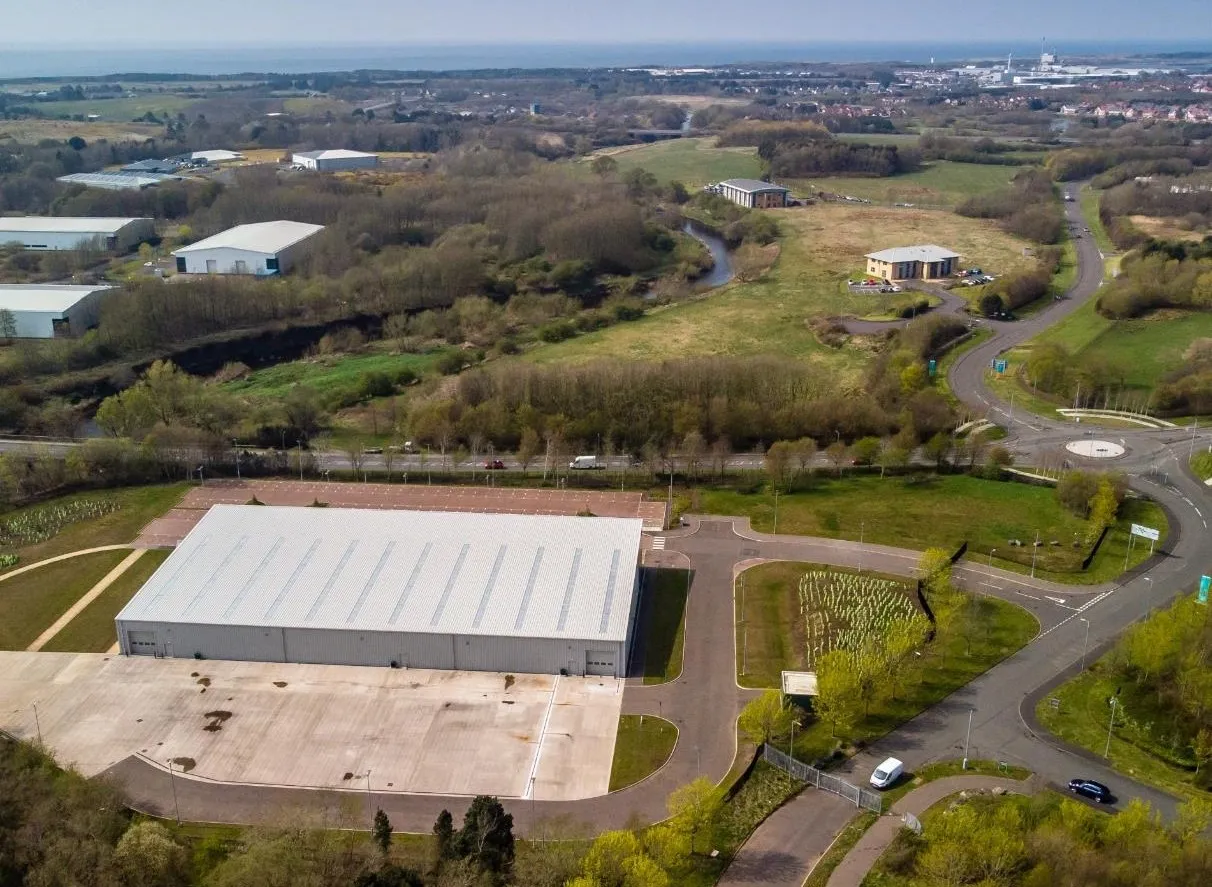
Future Strategy Review
The repurposing of existing vacant and derelict sites will in many cases be a long-term process, potentially many years. As existing sites leave the VDL register, it is likely that others will join, and the composition and characteristics of VDL will change over time.
With improved environmental protections, and a less industrialised economy, it can be expected that in the future there will be fewer sites with the legacy of contamination seen at old former industrial sites. Vacant and derelict sites may, on average, become smaller and increasingly in private hands. This more dispersed pattern of smaller sites will present different challenges to those which are larger, more consolidated and in public ownership.
The Vacant and Derelict Land Strategy should therefore be reviewed and refreshed after a period of 5 years to reflect the changing priorities of the Council, new legislation, and the changing composition of the stock of vacant and derelict land.
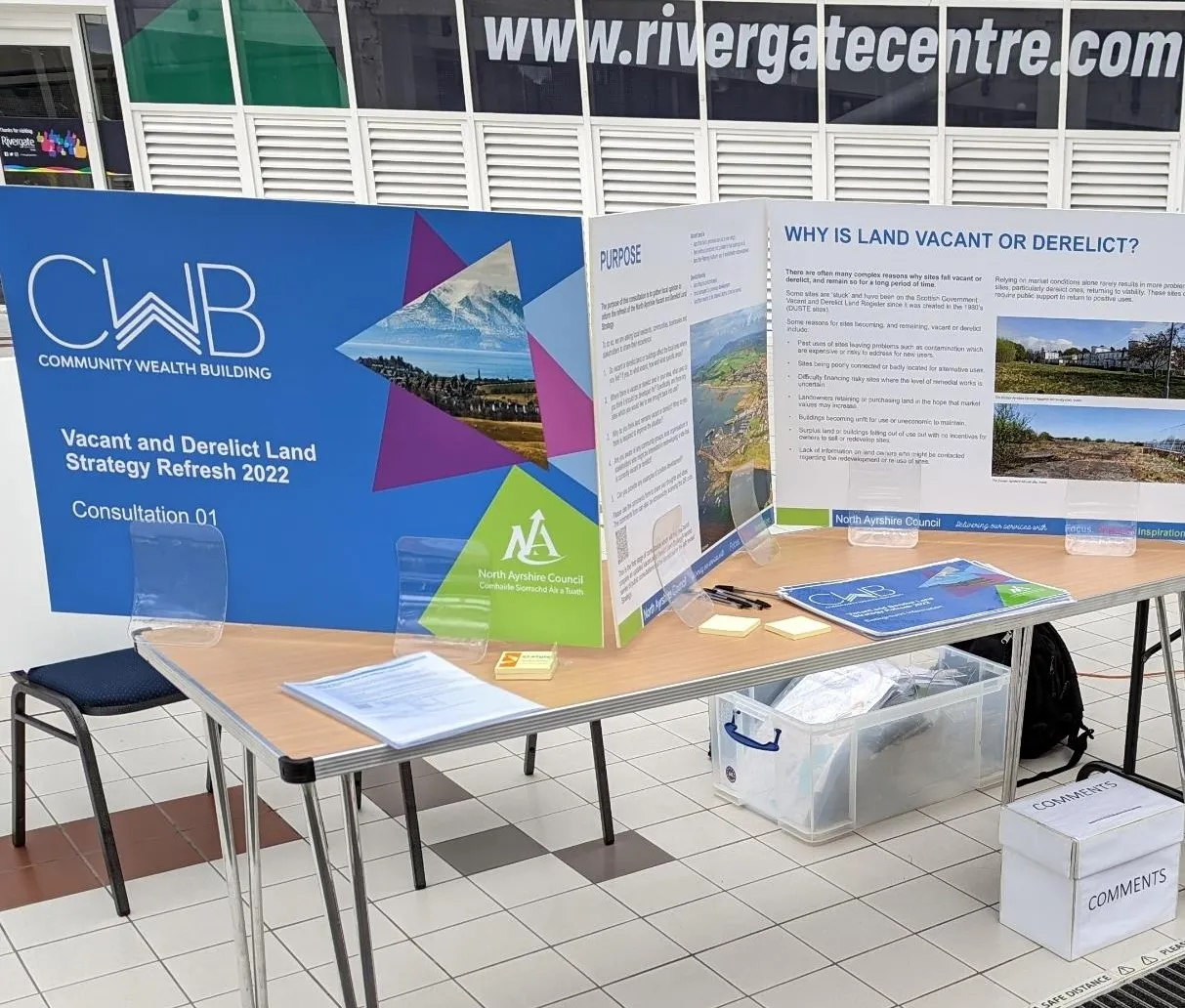
Developing the 2023 to 2027 strategy
Scotland 2045: our Fourth National Planning Framework, NPF4, was adopted and published on 13 February 2023. It sets out the Scottish Ministers’ policies and proposals for the development and use of land and plays a key role in supporting the delivery of Scotland’s national outcomes and the United Nations Sustainable Development Goals. NPF4 supports collaborative working to improve people’s lives by planning and delivering sustainable, liveable and productive places, recognising that better places will be an important part of achieving net zero in a way which also tackles longstanding challenges and inequalities.
Past industrial restructuring has had significant impacts in some places and communities, contributing to concentrations of disadvantage, child poverty, poor health outcomes and derelict land, including within North Ayrshire. NPF4’s national spatial strategy looks to use land wisely, including through a renewed focus on reusing vacant and derelict land to help limit the new land that we build on and to regenerate buildings and sites, thereby transforming places and improving the wellbeing of communities.
NPF4 supports development proposals that will result in the sustainable reuse of brownfield land including vacant and derelict land and buildings, whether permanent or temporary. Furthermore, given the need to conserve embodied energy, demolition of existing buildings is to be regarded as the least preferred option. This overall policy approach also seeks to recognise the contribution of brownfield land to nature recovery and realise opportunities for its use as productive greenspace, where appropriate, for example through the Central Scotland Green Network project, which is identified as a National Development.
Since 1988, the Scottish Government has undertaken an annual survey of vacant and derelict land. The main purpose of the data collected from local authorities is to provide the evidence base for monitoring the extent and state of urban vacant and derelict land, the remediation of vacant and derelict land and progress in bringing it into re-use, and to inform the programming of rehabilitation, planning, and reuse of urban vacant and derelict site, including in relation to the Vacant and Derelict Land Fund.
The approach to vacant and derelict land is guided by the priorities and strategies of North Ayrshire Council. Those of most relevance to the future strategy for vacant and derelict sites are highlighted below.
The North Ayrshire Council Plan 2019 to 2024 sets out the Council’s strategic approach which is focused on making North Ayrshire a fairer and more equal society. The Council Plan outlines our Vision, Priorities and Key Measures to achieve a North Ayrshire that is ‘Fair for All’.
North Ayrshire Council’s Community Wealth Building Strategy 2020 to 2025 was the first of its kind in Scotland.
The mission of Community Wealth Building in North Ayrshire is to support the achievement of the Council’s vision of a North Ayrshire that is ‘Fair for All’ by:
Quote: Enhancing local wealth and the creation of fair jobs, maximising the potential of all our places through working in partnership with our communities and businesses.
The Council’s Adopted Local Development Plan (November 2019), commonly known as LDP2, sets out how the Council aims to guide development and investment in the area over a 20-year period. The vision of the LDP is shared with the Community Planning Partnership’s Local Outcomes Improvement Plan (LOIP) and the spatial strategy supports the delivery of the LIOP and North Ayrshire becoming healthier, working, thriving and safer. This land-use strategy directs most development to our towns, villages and developed coastline where there is infrastructure capacity to support it, where there is access to existing services and where there are opportunities to re-use and redevelop brownfield land. The Council has commenced work on preparing a new Local Development Plan which will take account of NPF4.
The North Ayrshire Economic Recovery and Renewal Approach (a local ‘Green New Deal’), responding to the Covid 19 health emergency, sets out how the objectives of Community Wealth Building can be delivered through an inclusive and green economic recovery, achieving net zero carbon ambitions in response to the Climate Emergency, through the creation of sustainable infrastructure and regeneration projects, and creating fair jobs.
The Environmental Sustainability & Climate Change Strategy 2021 to 2023 aims to inspire positive low carbon behaviour, raise awareness of the sustainability and climate change agenda, maximise access to affordable renewable energy technology, support sustainable transport, utilise natural and built assets sustainably, build new assets sustainably in accordance with the Scottish Government’s investment hierarchy, deliver an inclusive and green economy based on the principles of Community Wealth Building and the local ‘Green New Deal’.
The North Ayrshire Regeneration Delivery Plan sets out the Council’s priorities for delivering on regeneration ambitions of the Council Plan and Community Wealth Building Strategy. The Plan focuses on the delivery of physical regeneration, informed by stakeholder consultation, reviewing existing community priorities and the outcomes of previous consultations. It aims to address local priorities, support changes within communities and to contribute to a vibrant and inclusive economy. The preparation and implementation of the Vacant and Derelict Land Strategy is and action of the Regional Delivery Plan.
The Regeneration Delivery Plan informs the Council’s priorities for securing and delivering against external funding sources including Scottish and UK Government funds. Some funding sources relate directly to vacant and derelict land, including the Vacant and Derelict Land Fund and the separate Vacant and Derelict Land Investment Programme. However, other funding streams applying to urban regeneration, economic development and environmental schemes have, and will continue to, enable change to vacant and derelict sites.
Other strategies of direct relevance to vacant and derelict land include:
The Local Biodiversity Action Plan, where the naturalisation and appropriate management of vacant and derelict sites can provide ecosystem services, spaces for nature and quality green space.
North Ayrshire’s 2030 Woodland: A Tree Planting Strategy, outlining the Council’s route map for planting 108,000 trees by 2030 required to meet its net zero goal, highlighting the potential for vacant and derelict sites to contribute to this target.
The Local Transport Strategy, with vacant or derelict sites potentially providing opportunities for active travel and encouraging more compact forms of development which are less reliant on car ownership.
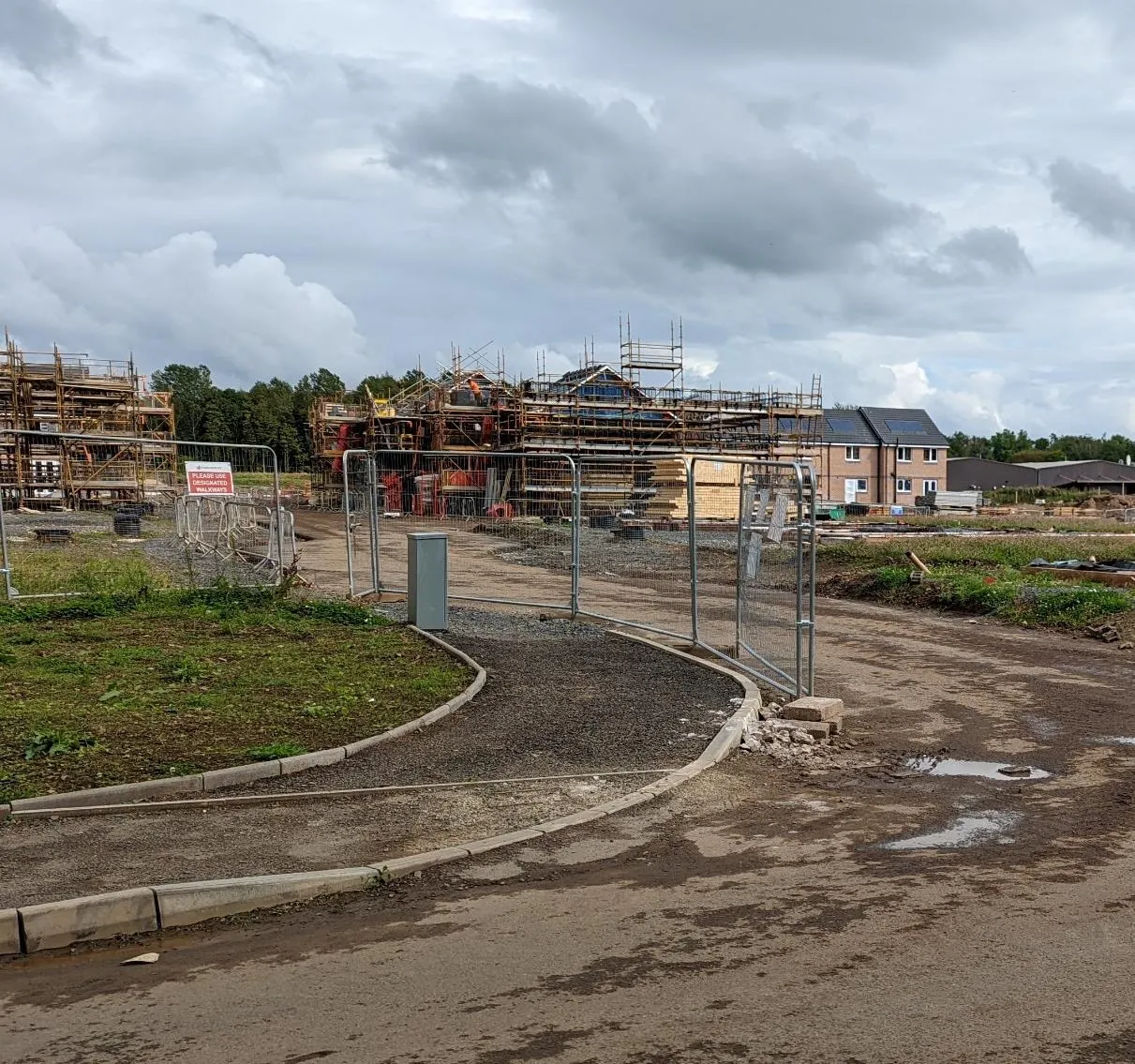
The Local Housing Strategy and Strategic Housing Investment Plan (SHIP), where the reuse of vacant and derelict land can contribute to ensuring there is an adequate supply of land to meet the housing needs of communities in North Ayrshire.
Food Growing Strategy, where vacant and derelict sites may provide space for community food growing initiatives and allotments, allowing communities to develop skills and adopt healthy lifestyles.
In summary, the appropriate regeneration of North Ayrshire’s vacant and derelict sites is a priority in its own right, but also presents significant opportunities for addressing Council priorities including:
- Town centre revitalisation and the creation of ‘20-minute neighbourhoods’
- Meeting the climate emergency and challenge of net zero
- Economic regeneration and employment
- Meeting housing needs
- Strengthening communities
- Making space for nature
The 2023 to 2027 Vacant and Derelict Land Strategy has been informed by engagement with stakeholders and communities of North Ayrshire, through online consultation and a series of in person events. Several common themes emerged from the range of responses received.
- Many respondents expressed how they would like to see vacant and derelict sites in community use, providing green space, recreation facilities, community gardens, allotments or used for renewable energy projects.
- Respondents expressed frustration that owners or purchasers of vacant and derelict sites appeared to be ‘land banking’ sites, with apparently no plans for immediate development.
- There was frustration that landowners were able to allow sites to remain or fall into disrepair, blighting the local area and attracting anti-social behaviour.
- Respondents often referred to the blighting effects of relatively small sites which have a disproportionate effect on their towns and communities. Some of these sites are not currently included in the register of vacant and derelict sites because of their size.
- People expressed concern about the loss of built heritage through buildings falling into disrepair or their demolition through redevelopment.
- Respondents commented on the blighting effect of coastal sites, detracting from a key asset of the area, negatively impacting residents and visitors alike. Some large coastal sites in North Ayrshire impede access to the coast.
- It was noted how some vacant and derelict sites are of value to communities, as green space or for their wildlife/biodiversity value. Residents would not want these sites to be developed or made inaccessible.
- Many respondents stated how they would like to see the Council intervene more to address vacant and derelict sites, for example through compulsory purchase or other enforcement action.
Other issues identified by stakeholders include:
- It is often the case that the owners of vacant or derelict sites are unknown, or are otherwise difficult to contact, or unwilling to engage.
- The risks associated with some sites, in particular smaller sites, may disincentivise small to medium sized developers and house builders, but may not be of sufficient scale to attract capital investment as part of a wider scale regeneration.
- Some sites, for example former industrial sites, are not well situated to fulfil present day social and economic needs, or to contribute to approaches such as ‘20-minute neighbourhoods’.
- The Council has limited resources to recover costs associated with making safe or dealing with environmental health matters. The possibility of cost recovery from landowners by the Council may even be a disincentive to sell a vacant or derelict site.
- Potential developers of vacant and derelict sites may be uncertain as to the types of development which may be possible or permissible and are therefore unwilling to risk the cost of planning applications and associated studies.
- Heritage designations, in particular Listed Building status, can add further complication and cost to the potential developers of derelict buildings.
- Enforcement action or acquisition of sites by the Council is restricted and needs specific requirements to be met.
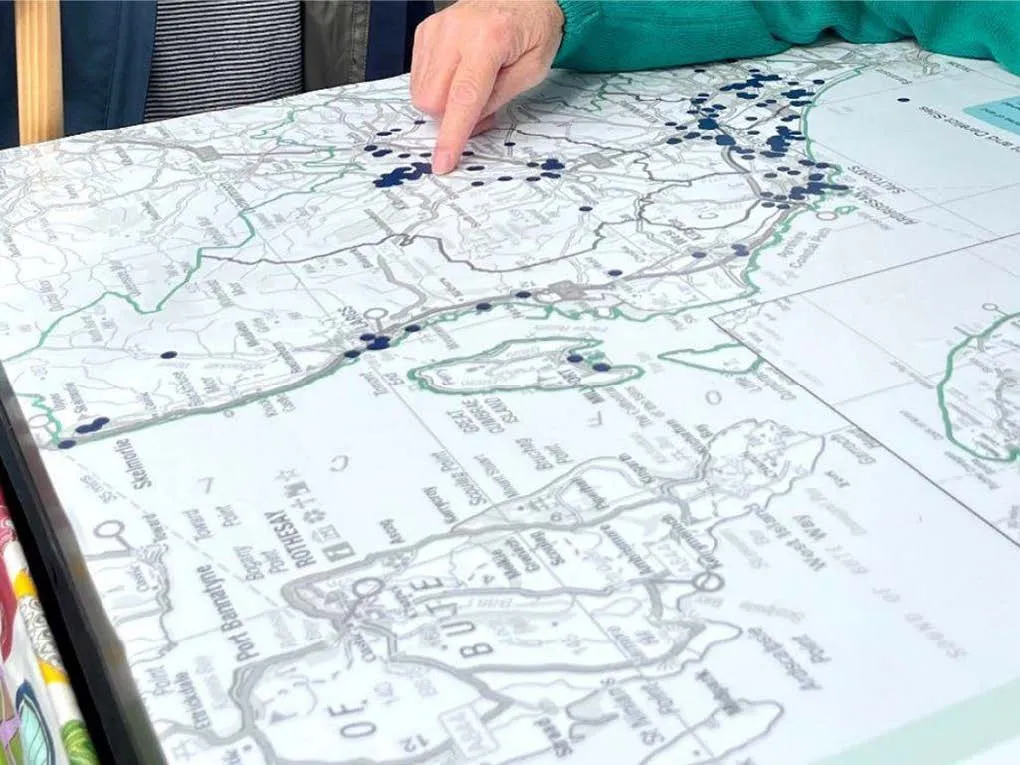
Scottish Land Commission Vacant and Derelict Land Taskforce
In 2018, the Scottish Land Commission and the Scottish Environment Protection Agency (SEPA) established a national Taskforce, comprising business, public and third sector bodies, to:
Quote: Transform Scotland’s approach to tackling vacant and derelict land, create the conditions necessary for eradicating persistent dereliction in urban communities and realise the social, economic and environmental benefits of returning unloved derelict urban land back to productive use.
The Taskforce undertook extensive research into the problems of VDL and has published research into the effect of VDL on communities, the opportunities it provides and case studies into bringing VDL sites back into use. Key issues identified include:
- The problem of long-term derelict sites (DUSTEs), with sites brought back into use tending to be smaller and more recently vacated.
- The blighting effect of long-term derelict sites on communities, negatively affecting the local environment, economy and social cohesion.
- How prominent sites tend to be the most harmful to communities, with effects exacerbated by the clustering of sites.
- The need to enable communities to take a lead role in identifying and prioritising locally significant sites for action.
- The need to focus efforts where urban dereliction is most heavily concentrated.
The outcome of the study is a series of recommendations, sitting within four main themes.
- Making better use of data
- Aligning policy to support delivery
- Aligning strategic funding to support delivery
- Stemming the flow of new sites
The full recommendations of the Vacant and Derelict Land Taskforce is available.
Architecture and Design Scotland Stalled Spaces Programme
In 2014, Architecture and Design Scotland developed the Stalled Spaces initiative to enable communities to transform disused spaces and communicate their aspirations to Local Authorities in their development, while also developing skills and knowledge within communities. While the Stalled Spaces initiative is no longer active, resources and guidance are available, including the Stalled Spaces Toolkit.
The toolkit provides a ‘how to’ guide, providing advice on topics such as forming a constituted group, budgeting, landowner agreements, planning permission, project development and promotion.
Centre for Local Economic Strategies (CLES)
The CLES was tasked by the Scottish Government to undertake a review of the longstanding problem of vacant and derelict land in the Glasgow City Region. The recommendations of this review, published in 2021, advocate the repurposing of VDL along the lines of Community Wealth Building, including:
- Taking a holistic approach to land, which is a shared resource, to which the Scottish Land Rights and Responsibilities Statement should apply
- Broader, long term land stewardship, rather than ownership, should be considered
- The need for work between agencies to catalyse action
- Simplifying funding streams
- Tackling sites in areas of greatest deprivation first
- Making all safe sites accessible
- Learning from local exemplars
- Prioritising carbon capture through peatlands, tree planting and rewilding
- Stemming the flow of new VDL
The full recommendations of the CLES report are available.
 Translate
Translate